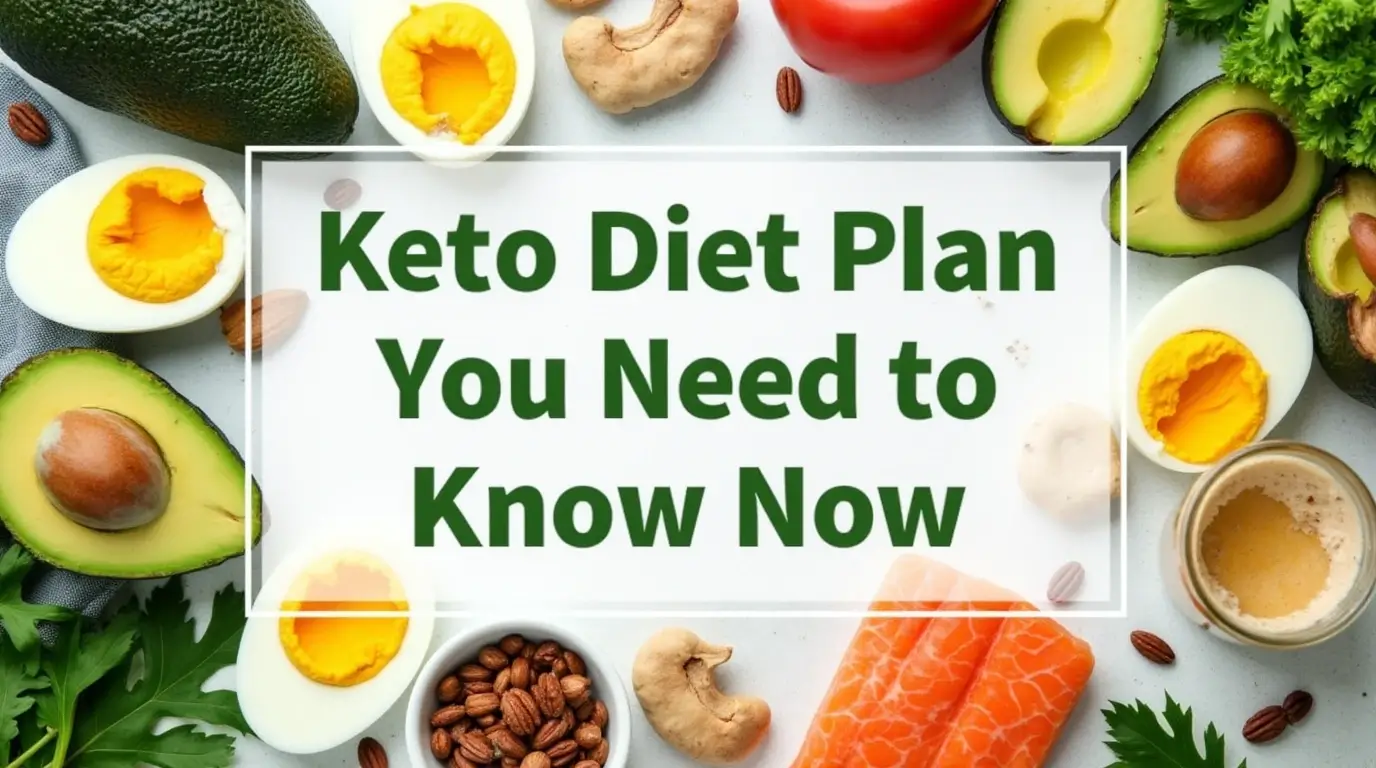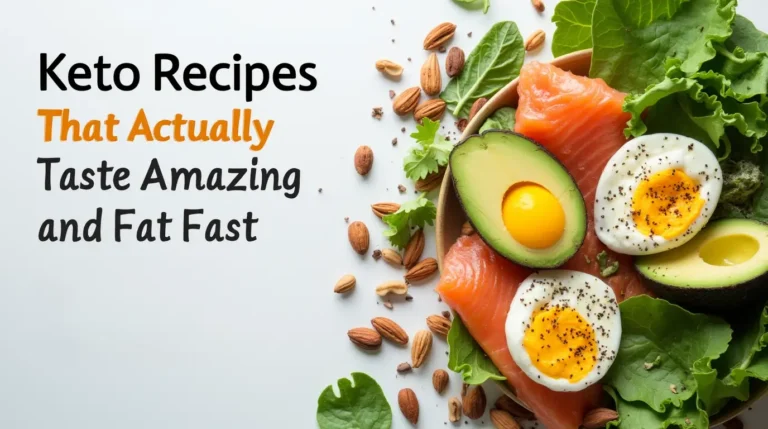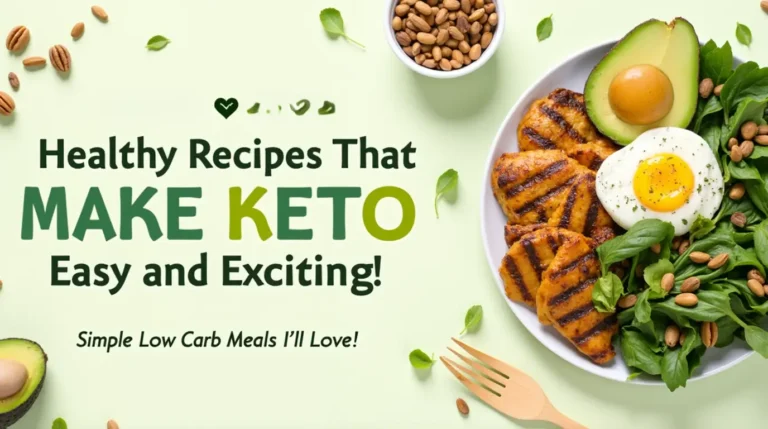We envision a world where everyone has the tools and knowledge to live a balanced, healthy, and fulfilling life. By providing reliable resources, personalized programs, and community support, we aim to be a beacon of hope for those on their health journey.
Table of Contents
Introduction to the Keto Diet
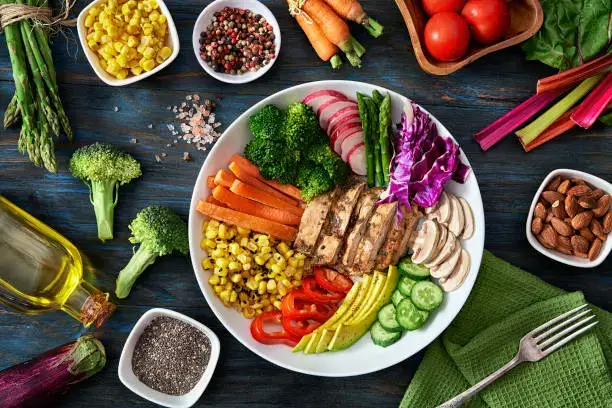
Keto Diet Plan
The ketogenic diet, commonly known as the keto diet, is a low-carbohydrate, high-fat eating plan that has gained popularity in recent years for its potential weight loss and health benefits. Originally developed in the 1920s to treat epilepsy, Keto Recipes; the diet has since evolved and captured the attention of those seeking various health improvements, including weight management and insulin sensitivity.
The main principle of the keto diet is to significantly reduce carbohydrate intake and replace it with healthy fats. This shift in macronutrient ratios encourages the body to enter a metabolic state known as ketosis. In ketosis, the body becomes highly efficient at burning fat for energy, rather than relying on carbohydrates. When carbohydrate intake is minimized, insulin levels drop, prompting the body to utilize stored fat as its primary energy source.
In addition to promoting weight loss, the ketogenic diet has been linked to several potential health benefits. Some individuals report increased mental clarity, enhanced energy levels, and reduced hunger, which can support dietary adherence. Additionally, research suggests that following a keto diet may have therapeutic effects for specific conditions, such as type 2 diabetes and certain neurological disorders. However, it is essential to consider the possible drawbacks of this eating plan, as well. Some individuals may experience side effects, commonly referred to as the “keto flu,” as their bodies adapt to the new way of fueling. These side effects can include fatigue, dizziness, and digestive discomfort, particularly during the initial transition period.
In conclusion, understanding the principles of the ketogenic diet, including its origins and effects on the body, is crucial for anyone considering this eating plan. By grasping the foundational aspects of the keto diet, individuals can make informed decisions tailored to their health goals and preferences.
Understanding Ketosis
Ketosis is a metabolic state in which the body shifts its primary energy source from carbohydrates to fats. During a typical carbohydrate-rich diet, the body relies on glucose, derived from sugars and starches, as its main fuel. However, when carbohydrate intake is significantly reduced, the body begins to utilize stored fat for energy, resulting in the production of molecules known as ketones. This process is pivotal for individuals following a ketogenic diet, as it encourages fat burning and weight loss.
The transition into ketosis occurs when the liver converts fatty acids into ketones, which can then be used by the brain, muscles, and other organs as an alternative energy source. The two primary types of ketones produced are acetoacetate and beta-hydroxybutyrate. These ketones serve as efficient fuel, often producing more energy per gram than glucose. This is beneficial not only for weight management but also for maintaining energy levels and mental clarity.
Determining whether one has entered ketosis can be assessed through various methods. The most common way is through urine test strips, which measure the level of acetoacetate in urine. Blood ketone meters can also provide a more precise measurement by directly assessing beta-hydroxybutyrate levels in the bloodstream. Additionally, individuals may notice several signs indicating the occurrence of ketosis. These can include heightened energy levels, reduced appetite, and a unique fruity odor on the breath, often described as “ketone breath.” Other symptoms may involve initial fatigue, known as the “keto flu,” as the body adapts to this new metabolic state.
Understanding the biological process of ketosis is vital for those embarking on a keto diet, as it elucidates how the body efficiently transitions into fat-burning mode. This understanding can help individuals monitor their progress and optimize their strategies while adhering to the ketogenic lifestyle.
Benefits of Following a Keto Diet
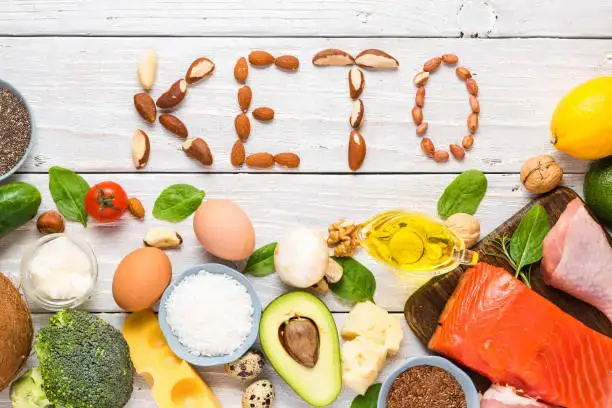
The ketogenic diet, commonly known as the keto diet, is a low-carbohydrate, high-fat dietary approach that has gained significant popularity in recent years. One of the most prominent benefits of the keto diet is its potential for effective weight loss. By significantly reducing carbohydrate intake, the body enters a metabolic state known as ketosis, where it becomes efficient at burning fat for energy. This process not only aids in shedding excess pounds but also helps in maintaining muscle mass, which is often a concern with traditional calorie-restricted diets.
In addition to weight loss, many individuals report enhanced mental clarity and focus after adopting a keto diet. This may be attributed to the steady supply of energy derived from fat, as opposed to the rapid spikes and drops in blood sugar resulting from carbohydrate consumption. Ketones, the byproduct of fat metabolism, are an efficient fuel for the brain, potentially leading to improved cognitive function and sharper focus throughout the day.
Another significant advantage is the sustained increase in energy levels. Unlike the quick bursts of energy associated with high-carbohydrate meals, the state of ketosis promotes a more stable source of energy. Many followers of the ketogenic diet note that they experience fewer energy slumps and greater overall stamina, making it easier to engage in physical activity and maintain an active lifestyle.
Furthermore, preliminary research indicates that the keto diet may offer therapeutic benefits for certain medical conditions. For example, it has been historically used to manage epilepsy, particularly in children who do not respond to conventional treatments. More recently, studies have suggested that a ketogenic approach may aid in the management of type 2 diabetes by improving insulin sensitivity and potentially reversing the condition.
Overall, the keto diet presents a range of potential benefits that extend beyond weight loss, impacting mental performance, energy levels, and even medical conditions, making it a compelling option for those seeking long-term health improvements.
Keto Diet Foods: What to Eat and Avoid
Adhering to a successful keto diet plan requires careful selection of food items that align with low-carbohydrate and high-fat dietary principles. The foundation of a ketogenic diet consists of various meat options, high-fat dairy, and low-carb vegetables. Including such foods facilitates adherence to nutritional guidelines while ensuring essential nutrient intake.
In terms of proteins, meats including beef, pork, and poultry are excellent choices. These foods are not only low in carbohydrates but also rich in protein, promoting satiety and muscle maintenance. Additionally, fatty cuts of fish such as salmon and mackerel contribute to the required fat intake while providing omega-3 fatty acids, which have numerous health benefits.
High-fat dairy products are another keto staple. Options like butter, cheese, and cream are satisfying and versatile, enabling incorporation into various meals. It is advisable to opt for full-fat versions, as they are lower in carbohydrates compared to their low-fat counterparts. On the vegetable front, focus should be placed on leafy greens like spinach, kale, and cruciferous vegetables such as broccoli and cauliflower. These vegetables are rich in vitamins and minerals while being low in carbs, making them suitable for a ketogenic diet.
Conversely, certain foods should be avoided to ensure the successful implementation of a keto diet. Grains such as rice, wheat, and oats are high in carbohydrates, which can hinder ketosis. Sugary foods, including sweets, soda, and most fruits, also contain high levels of sugar, disrupting the body’s ability to enter or maintain the state of ketosis. Starchy vegetables like potatoes and corn should similarly be excluded from the diet due to their elevated carbohydrate content.
Meal planning is integral to navigating a ketogenic approach effectively. By preparing meals ahead of time, dieters can curate balanced options that fit their macros and resist the temptation of high-carb foods. Maintaining a food diary or utilizing meal prep services can also assist in sticking to the guidelines of the keto diet.
Sample Keto Meal Plan for Beginners

Embarking on a keto diet can be both exciting and challenging, particularly for beginners. A well-structured meal plan is essential for success and adherence, ensuring that you meet your nutritional needs while adhering to carbohydrate limits. Below is a sample one-week keto meal plan designed to help newcomers seamlessly integrate this dietary approach.
Day 1:
Breakfast: Scrambled eggs cooked in coconut oil, served with avocado slices.
Lunch: Grilled chicken salad with mixed greens, olive oil dressing, and feta cheese.
Dinner: Baked salmon with asparagus, drizzled with lemon butter sauce.
Snack: A handful of almonds.
Day 2:
Breakfast: Greek yogurt mixed with chia seeds and sliced berries.
Lunch: Lettuce wraps filled with turkey, cheese, and avocado.
Dinner: Zucchini noodles topped with marinara sauce and ground beef.
Snack: Celery sticks served with cream cheese.
Day 3:
Breakfast: Omelet with spinach, mushrooms, and mozzarella cheese.
Lunch: Egg salad served on a bed of arugula.
Dinner: Grilled pork chops accompanied by sautéed broccoli.
Snack: Olives and cheese cubes.
Day 4:
Breakfast: Smoothie made with unsweetened almond milk, spinach, and protein powder.
Lunch: Spinach salad topped with bacon, avocado, and a boiled egg.
Dinner: Roast chicken served with cauliflower mash.
Snack: Macadamia nuts.
This pattern continues with similar meals for Days 5 through 7, emphasizing variety while maintaining macro distribution consistent with a ketogenic lifestyle. Ensure each meal provides adequate fat, moderate protein, and very low carbohydrates to facilitate ketosis. It is vital to adjust portion sizes according to individual caloric needs.
Incorporating healthy fats, leafy greens, and protein-rich foods lays a solid foundation for beginners. The meal plan presented serves as a guideline to ease into the keto diet, making it manageable and enjoyable while adhering to dietary goals.
Common Mistakes to Avoid on Keto
Embarking on a ketogenic diet can be a transformative journey, yet it is not without its challenges. Many individuals encounter common pitfalls that can hinder their progress or lead to unnecessary complications. One prevalent mistake is inadequate fat intake. Since the keto diet emphasizes high fat consumption for effective ketosis, failing to consume sufficient healthy fats may result in fatigue and cravings. It is crucial to prioritize sources such as avocados, olive oil, and nuts to ensure that daily fat requirements are met.
Another significant oversight is neglecting hydration. The shift to a ketogenic lifestyle can lead to increased water loss, primarily due to reduced carbohydrate intake. Consequently, many followers of the keto diet may experience dehydration, which can manifest as fatigue, headaches, or dizziness. To mitigate this risk, it is advisable to drink ample water throughout the day, aiming for at least eight 8-ounce glasses, and incorporating electrolytes to assist with proper hydration levels.
Additionally, some individuals tend to focus excessively on macronutrient ratios while overlooking the importance of nutrient diversity. A well-rounded diet is essential even on keto, as it contributes to overall health and well-being. Incorporating a variety of low-carb vegetables, healthy fats, and quality proteins will ensure that the body receives the necessary vitamins and minerals. This diversity can also help ward off deficiencies that may arise from a limited food selection.
To overcome these challenges, individuals can benefit from meal planning, tracking their food intake, and educating themselves about the keto diet. Seeking guidance from professionals, such as nutritionists who specialize in ketogenic diets, can also provide invaluable insights. By recognizing and addressing these common pitfalls, individuals can enhance their chances of successfully adhering to a ketogenic lifestyle and achieving their health goals.
Keto-Friendly Snacks and Desserts

Following a ketogenic diet does not mean that you must sacrifice flavor or indulgence. Instead, there are numerous satisfying keto-friendly snacks and desserts that can be easily incorporated into your meal plan. These options cater to your cravings without jeopardizing your state of ketosis, allowing you to enjoy delicious treats while staying within your dietary goals.
One popular option for a keto snack is avocado. Rich in healthy fats and low in carbohydrates, avocados can be enjoyed in various forms. Simply slice an avocado and sprinkle it with salt and pepper, or prepare a creamy guacamole to accompany fresh vegetables, such as celery sticks or bell pepper slices. Another delectable option is cheese. Full-fat cheese varieties, such as cheddar, mozzarella, or cream cheese, provide substantial flavor and can be consumed in moderation as a nutrient-rich snack.
Nuts and seeds also serve as excellent snacks for those on a keto diet. Almonds, walnuts, and pumpkin seeds are particularly favorable due to their high healthy fat content and low carbohydrate count. A handful can easily curb hunger and provide energy throughout the day. Additionally, consider making fat bombs, a popular keto dessert that combines ingredients like coconut oil, nut butter, and unsweetened cocoa powder. These small, energy-dense snacks are perfect for satisfying sweet cravings.
If you are searching for a quick dessert option, keto-friendly cheesecake delights can be a go-to. Using cream cheese, almond flour, and a sugar substitute like erythritol, you can create a rich and satisfying cheesecake that aligns with your ketogenic lifestyle. Furthermore, keto cookie recipes, which often use almond flour and sugar alternatives, allow you to indulge in freshly baked treats without excessive carbs. Experimenting with recipes can make it enjoyable to discover your perfect keto-friendly desserts and snacks.
Dealing with Keto Flu
The term “keto flu” refers to a group of symptoms that some individuals experience when transitioning to a ketogenic diet. These symptoms can include fatigue, headaches, irritability, and brain fog. They are often the result of the body adapting to a state of ketosis, where it shifts from using carbohydrates as its primary energy source to utilizing fats. This transition can produce temporary discomfort as the body adjusts to the new metabolic state.
Keto flu typically occurs within the first week to ten days of beginning the diet, coinciding with a reduction in carbohydrate intake. When carbohydrates are drastically cut, the body undergoes changes in insulin levels and begins to deplete glycogen stores, which can result in energy fluctuations and mood changes. Additionally, the initial loss of water weight associated with reduced carbohydrate consumption can lead to dehydration and electrolyte imbalances, further exacerbating symptoms.
To help manage the symptoms of keto flu, there are several practical strategies one can employ. First, increasing hydration is crucial; drinking plenty of water can help alleviate headaches and fatigue. keto diet plan; Additionally, ensuring an adequate intake of electrolytes—particularly sodium, potassium, and magnesium—can be beneficial. keto diet plan; Adding a pinch of salt to foods or drinking bone broth can help replenish these essential minerals.
Gradually easing into the ketogenic diet by reducing carbohydrates slowly rather than making an abrupt change can also ease the transition. keto diet plan; Implementing healthy fats into meals, such as avocados or olive oil, can provide sustained energy. keto diet plan; Finally, ensuring adequate rest and sleep during this period is vital, as fatigue can be exacerbated by the body’s adjustment to this new dietary lifestyle.
By incorporating these strategies, individuals can more effectively manage the experience of keto flu and move comfortably into the desired state of ketosis.
Long-term Success on a Keto Diet
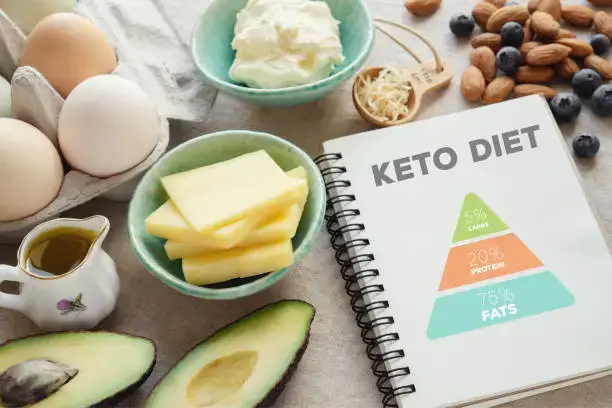
Maintaining a successful keto diet over the long term requires careful planning and commitment. keto diet plan; Once you achieve your initial weight loss goals, it’s essential to consider how to continue benefiting from a ketogenic lifestyle. keto diet plan; This can often involve modifying your approach while still adhering to the primary principles of the diet. keto diet plan; One effective strategy for sustaining weight loss on keto is to incorporate carb-cycling. keto diet plan; This technique allows you to have specific days where you consume slightly higher amounts of carbohydrates followed by days of strict keto adherence, which can help prevent metabolic slowdown and keep your diet enjoyable.
Moreover, dining out or traveling while on a keto diet can pose challenges, but with a bit of preparation, it becomes manageable. keto diet plan; When choosing restaurants, look for options that prioritize whole, unprocessed foods. keto diet plan; Many establishments offer salads, grilled proteins, or vegetable-centric dishes that align well with your dietary needs. keto diet plan; Additionally, don’t hesitate to communicate your preferences to the staff; most are willing to accommodate special requests, such as substituting high-carb sides for more vegetables. keto diet plan; Planning ahead when traveling can also involve researching local culinary offerings and identifying keto-friendly choices at various dining establishments.
Tracking your macros remains a vital component of long-term success on the keto diet. keto diet plan; Regularly examining your intake ensures that you stay within recommended limits, effectively maintaining ketosis. keto diet plan; Utilizing apps that facilitate macro tracking simplifies the process and helps you make informed dietary choices. keto diet plan; Furthermore, obtaining support from online communities or local groups can bolster your commitment to a ketogenic lifestyle. keto diet plan; By connecting with others who share your dietary goals, you can exchange tips, recipes, and encouragement to stay motivated and accountable.
Did You Try this tips ?
There are no reviews yet. Be the first one to write one.
blood work brain health cancer treatment climate health diabetes treatments digestive health disease management disease mapping exercise plan fitness tips hair care hair growth hair treatment health foods health insurance health secrets health tips healthy habits healthy recipes heart disease home workouts immune boost immune foods keto delivery keto plan keto recipes kidney disease lifestyle diseases medicine innovation melanoma treatment mental health morning exercise natural remedies non melanoma nutritional advice raw nutrition skin cancer skin care skin health sleep exercise sleep technology telemedicine services viral threats walking benefits weight loss
